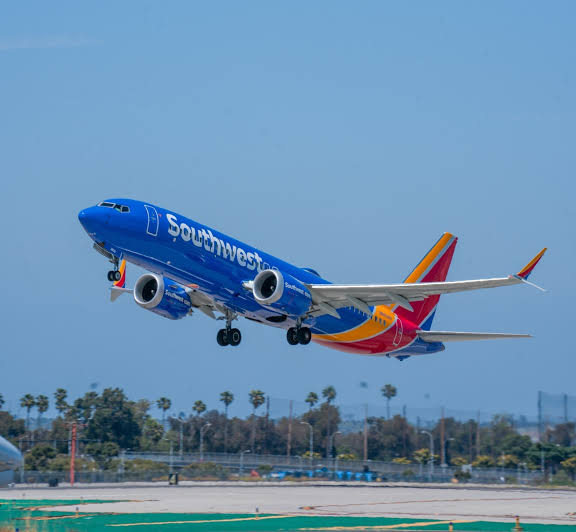
Southwest Airlines, one of the largest low-cost carriers in the United States, is facing a major operational shift set to take place in April 2025. The airline has announced plans to suspend operations at multiple airports, cut routes, and lay off a significant number of employees in an effort to address financial struggles and operational challenges. This decision comes amid growing concerns about Southwest’s long-term stability, leadership changes, and the pressure to restructure its business model.
Why Is Southwest Airlines Suspending Operations?
The decision to suspend operations and cut routes is primarily driven by financial losses, operational inefficiencies, and external pressures from investors.
1. Financial Struggles
Southwest reported a net loss of $231 million in the first quarter of 2024, highlighting growing concerns about the airline’s profitability. The losses were compounded by delays in Boeing aircraft deliveries, which disrupted fleet expansion plans and overall operational efficiency. Originally, Southwest expected 46 new Boeing 737 Max 8 planes, but only 20 were delivered due to production delays.
2. Layoffs and Cost-Cutting Measures
In response to financial struggles, Southwest Airlines announced layoffs affecting approximately 1,750 corporate employees and 11 senior leadership positions. This marks the first mass layoff in the airline’s 53-year history. The company aims to save $210 million in 2025 and $300 million annually by 2026 through these workforce reductions. However, the layoffs also come with a one-time severance cost of $60 million to $80 million.
3. Route and Airport Closures
Southwest is also suspending operations at four airports:
Cozumel, Mexico
Syracuse, New York
Bellingham, Washington
George Bush Intercontinental Airport in Houston
The airline cited low profitability and network restructuring as key reasons for these closures. By cutting unprofitable routes, Southwest hopes to optimize its network and focus on more lucrative markets.
Changes to Southwest’s Atlanta Operations
One of the most significant changes will be in Atlanta, where Southwest plans to reduce the number of gates from 18 to 11 and cut flights to 16 cities. Currently, Southwest serves 37 cities from Atlanta, but this number will be reduced to 21 starting in April.
These changes will affect around 200 flight attendants and 140 pilots, who will need to bid for reassignment to other bases or accept voluntary time-off programs. While the Atlanta base will remain open, the reduced operations signal a shift in Southwest’s strategy to consolidate resources.
The Role of Activist Investors in Southwest’s Restructuring
Southwest Airlines is also facing mounting pressure from Elliott Investment Management, a hedge fund that recently acquired a $1.9 billion stake in the airline. Elliott has been pushing for leadership changes, cost-cutting measures, and policy shifts, including a potential move from open seating to assigned seating as a way to increase revenue.
Activist investors often seek rapid and aggressive changes to boost stock value, and Southwest’s recent restructuring efforts appear to align with these demands. The airline’s leadership, including CEO Bob Jordan, has acknowledged the need for change but has also emphasized that the company must stay true to its low-cost carrier identity.
How Will These Changes Affect Southwest Passengers?
For travelers, Southwest’s operational changes will have both positive and negative effects:
Fewer Flight Options – The suspension of services at certain airports and reduced routes in Atlanta will limit travel options for some passengers, particularly those who rely on Southwest for affordable flights.
Potential Fare Increases – With fewer available routes and a more selective focus on high-revenue markets, ticket prices could rise on certain routes.
No Immediate Changes to Southwest’s Open Seating Policy – While investors are pushing for assigned seating, the airline has not yet announced any changes to its signature open seating policy.
What’s Next for Southwest Airlines?
As April 2025 approaches, Southwest will continue implementing its restructuring plan. The airline is expected to:
Evaluate additional cost-saving measures – Further staff reductions or operational cuts may be announced if financial struggles persist.
Assess the impact of reduced operations in Atlanta – If downsizing in Atlanta proves beneficial, similar strategic reductions may occur at other hubs.
Navigate investor expectations – Activist investors will likely continue pushing for changes, which could include further leadership restructuring.
Final Thoughts
Southwest Airlines’ decision to suspend operations at multiple airports and lay off employees marks a turning point for the airline. While these measures aim to restore financial stability and improve efficiency, they also raise concerns about the airline’s long-term future. The aviation industry is highly competitive, and Southwest’s ability to adapt to these challenges will determine whether it can maintain its reputation as a leading low-cost carrier.
As the airline prepares for these operational changes, passengers and employees alike will be watching closely to see how Southwest navigates this period of transformation.